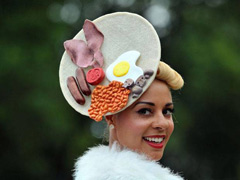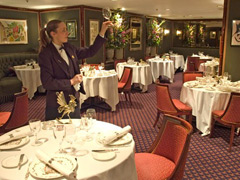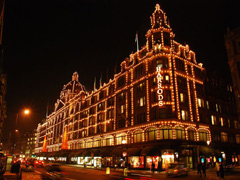


Ascot’s dress code is legendary: no short skirts, spaghetti straps or branded clothing are to be worn. But what about in London, can wearing the wrong shoes still get you refused entry at the door?
The sporting club
Clubs catering to tennis and cricket sometimes impose dress codes. In 2012 the Marylebone Cricket Club felt compelled to issue picture cards depicting acceptable and unacceptable dress, after complaints were made over the amount of flesh some punters had on view. For women, forbidden items include midriff baring tops and leggings without a skirt covering their derriere; for men, polo shirts and heaven forbid, untailored jackets.
At around the same time the All England Club, aka, Wimbledon, issued a similar pictorial guide for its members. The all-white dress code for participants is well-documented, but this was the first time in its 150 year history it felt compelled to create a sartorial rule for members.
It’s not unusual for golf clubs to be strict either: The Royal Blackheath golf club has instructions such as no external cargo pockets or tailored shorts that go below the knee. And if you thought rules were archaic and blissfully unaware of 21st century culture, think again, as the Finchley Golf Club states that: “Only shirts with collars may be worn in the clubhouse or on the course. The one exception is the crew neck golf mock, as worn by Tiger Woods.”
The opera, the theatre
There are no formal dress codes for either the theatre, the ballet or the opera. However in 2012 (see a pattern emerging?) the English National Opera went against the grain with their “Undress for the Opera” initiative, encouraging people to attend even if they wanted to wear jeans, in a bid to make opera-going more accessible. Bizarrely, this was the first time in the organisation’s history that a dress code was formally introduced, and as most opera goers favour casual clothing, many felt this was a bit of a strange move. No one gets turned away from the Coliseum, the ENO’s home, for wearing jeans, but has anyone been turned away from the ENO for being too dressed up?
\n\nRestaurants
Certain restaurants still have a strict dress code. At the Ritz Restaurant denim is only permitted at breakfast, and a jacket and tie are required at all other times. Le Gavroche asks male diners to wear a jacket, but in-keeping with their phenomenal customer service, they have jackets available should a rogue gentleman turn up without one. Restaurant Gordon Ramsay doesn’t allow shorts or sportswear, and the Ivy specifies that men wearing shorts or vests are not allowed entry, in the summer, but doesn’t actually state whether these are OK in the winter.
Nightclubs
Whereas it’s the most upmarket fine dining restaurants that impose dress codes, the same can’t be said for the bars and nightclubs that say things like “dress to impress” on their promo material. West End nightclubs (think Funky Buddha, Embassy, Tiger Tiger and of course celebrity favourites like Mahiki and Movida) will still turn you away for wearing trainers and sportswear, not that the people dressed within are what most fashionistas would deem stylish.
On the other hand nightclubs where people go to listen to specific DJs and dance rather than meet potential partners don’t have such rules. Here you’ll only get turned away if you’re obviously inebriated, not because of the shoes you’re wearing.
\n\nMembers’ Clubs
Trendy private members’ clubs like Shoreditch and Soho House have no dress code (although if you jump in to the rooftop swimming pool at Shoreditch House you will get thrown out if you’re just in your underwear, as they consider this to be unhygienic). One would expect attendees of the older clubs who are aristocrats in some cases, to be aware of a dress code, however the establishments still need to make this clear. Annabel’s for example has a helpful picture guide of how dress codes have relaxed through the years, from ruffled bloomers in 1760 to the present day jacket and collared shirt. A sketch of a man sporting a patterned T-shirt and jeans bears the caption “not yet”. Casual or cowboy boots are also a strict no-no for both men and women.
Shopping
Even Harrods wants their customers to look a certain way. The famous department store introduced a dress code in 1989, under the dutiful eyes of Mohammed Al Fayed. The store, by now a popular tourist attraction, was not making as profit as it could have been from the throngs of visitors who turned up merely to take photographs and perhaps splash out on a key ring. And so people sporting ripped jeans, beach wear and even backpacks started to be turned away at the door. They’ve since relaxed their dress code to incorporate “sensible restrictions”, so no crash helmets, clothes that could offend other customers or garments that could damage the store’s products, although it’s hard to image what item of clothing could cause grievous bodily harm to Harrods’ famous sphinx.
Doing a Google search for “London dress codes” yields a surprisingly large number of forum posts by worried Americans who are losing sleep over what to wear so as not to look like tourists when they are visiting the UK. This might just be why dress codes are so useful.


